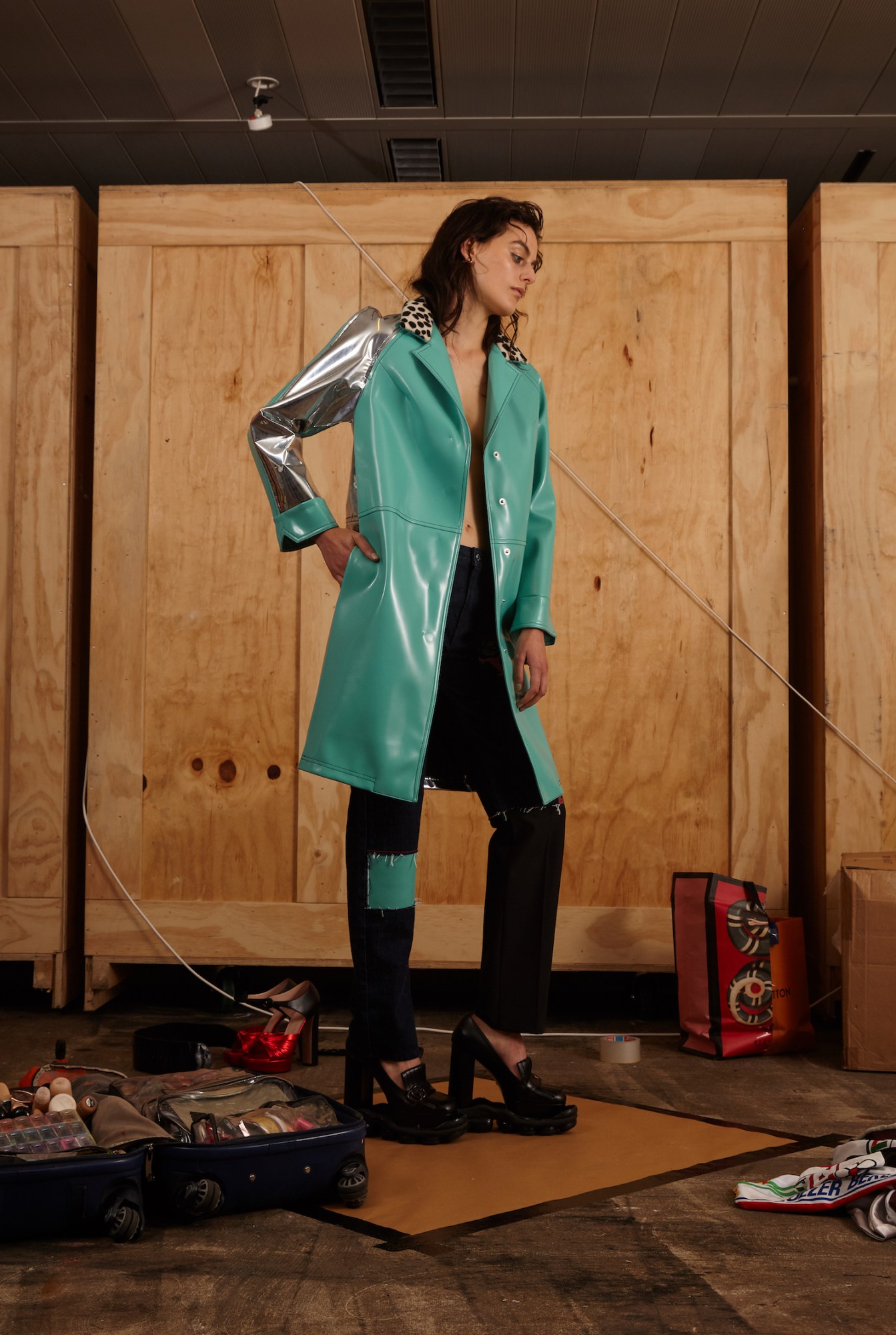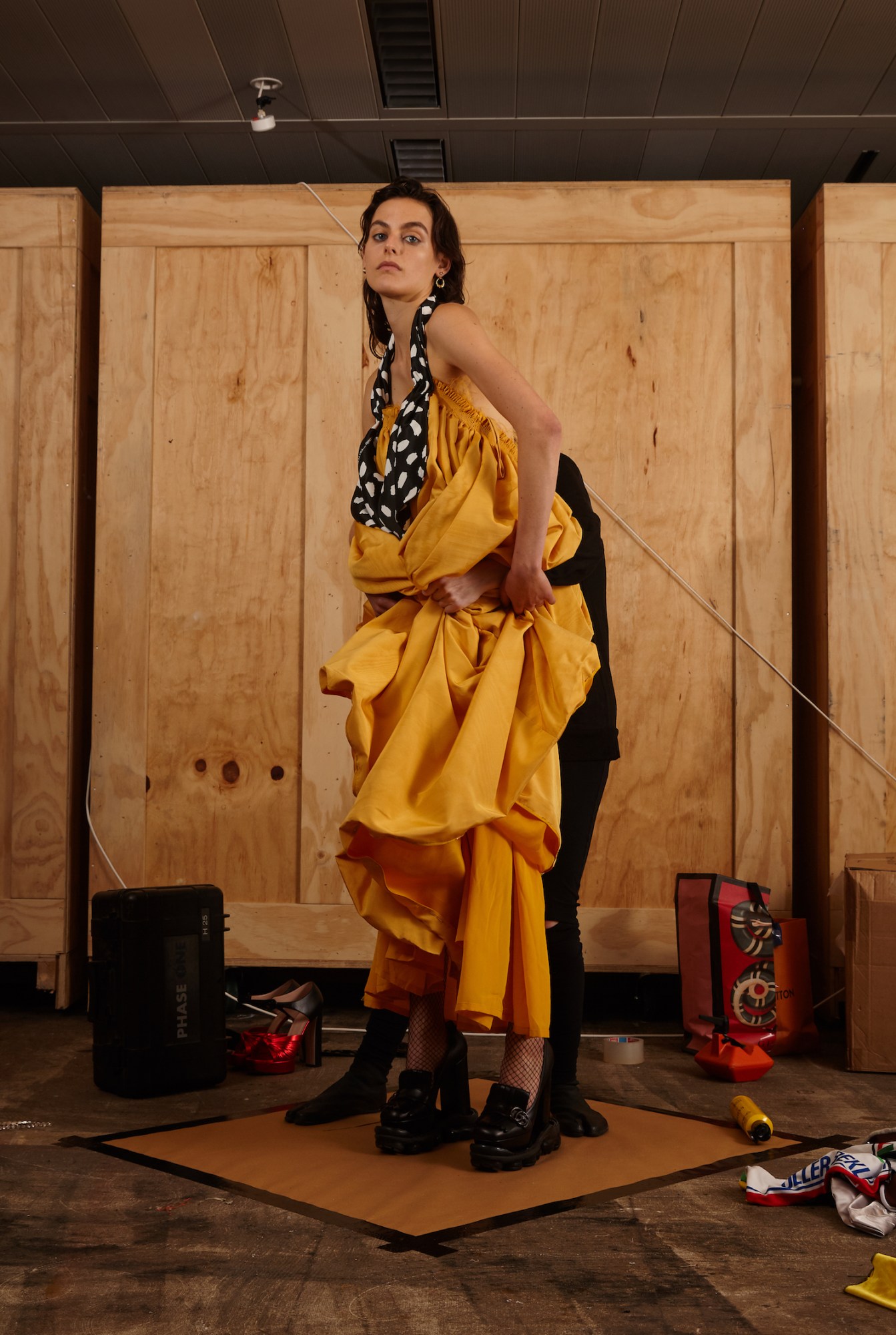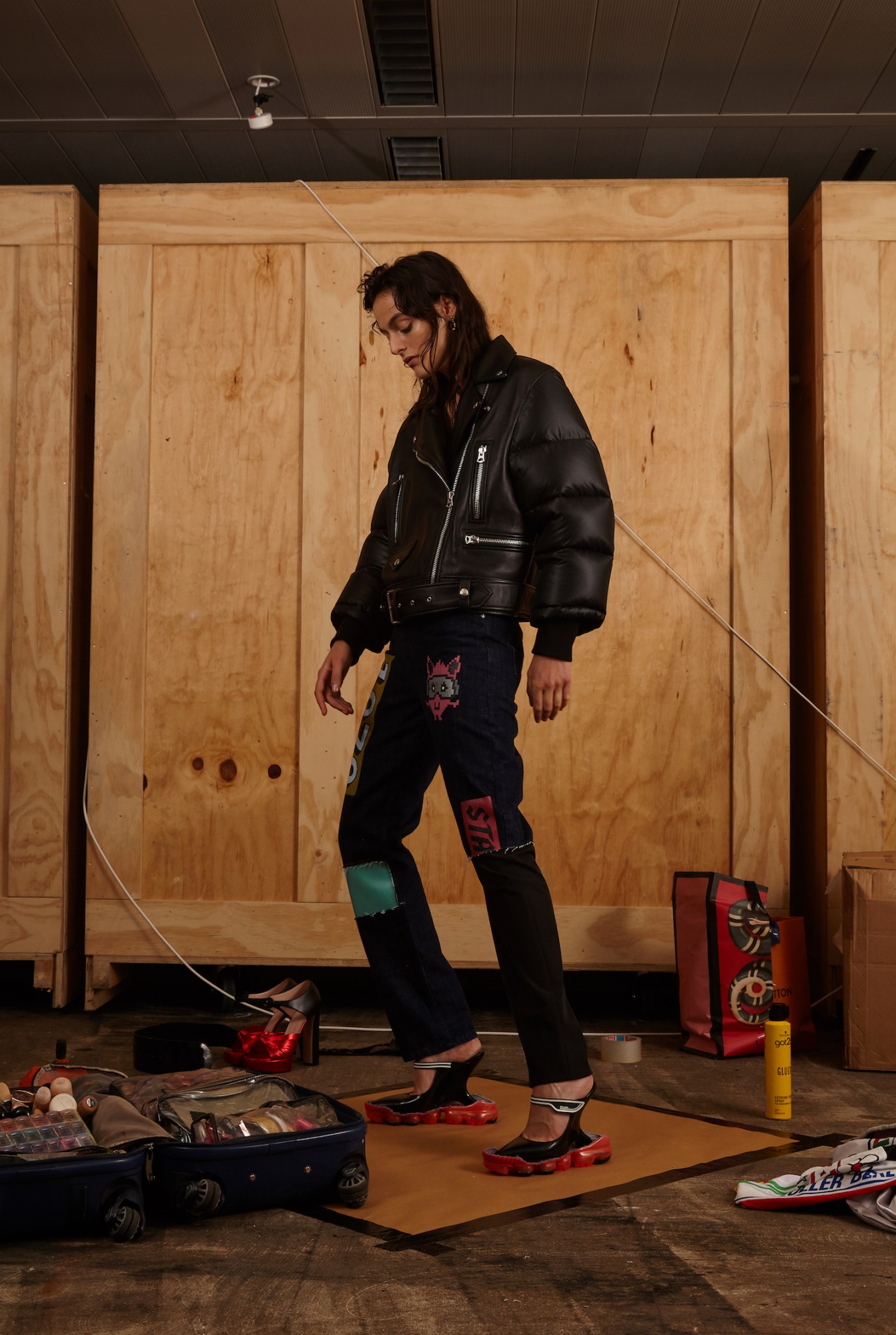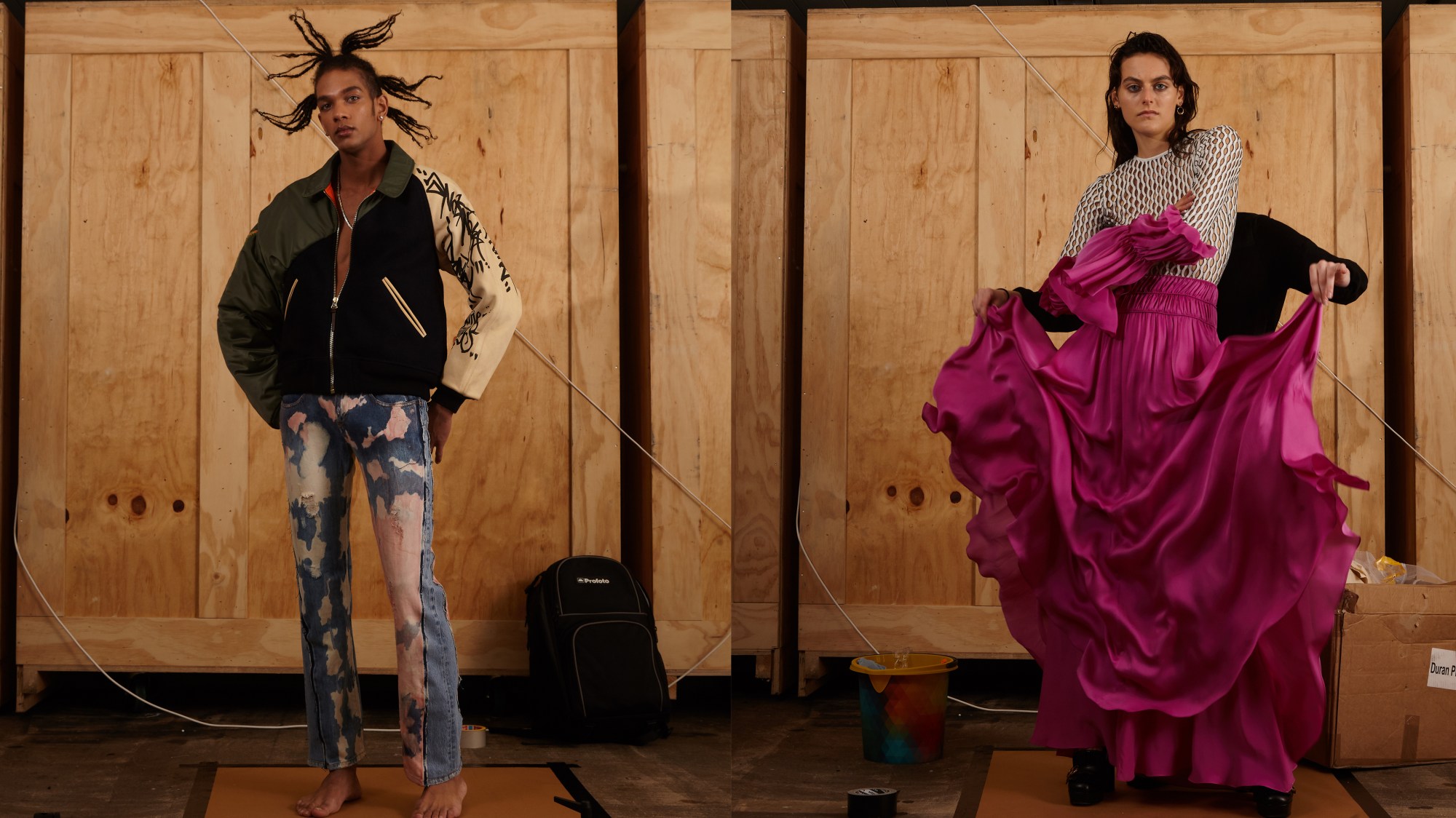It is no secret that fashion’s waste problem is a burning issue — quite literally — as millions of items of clothing end up on bonfires, or in landfills every year, causing irreparable damage to the environment. Extinction Rebellion has a point when it protests that the fashion industry needs to be drastically reconfigured for the 21st century, if it hopes to survive into the 22nd. An increasing number of designers are taking note. Supply chains are being rethought, materials recycled and reused.
For Dutch designer Duran Lantink, who was a finalist in the LVMH Prize earlier this year, it comes down to re-piecing clothes that already exist and creating one-of-a-kind items, wild collaged mash-ups of luxury brands. You probably remember the hot-pink yonic trousers he designed for Janelle Monáe in her Pynk music video. You may even recognise some of the elements of his garments from other brands, but for the most part they are transformed into something new and unrecognisable. A puffer scarf might become the sleeves of a biker jacket, or a leather skirt might become panelling on a spliced-together tweed coat with sleeves fashioned from a dress.
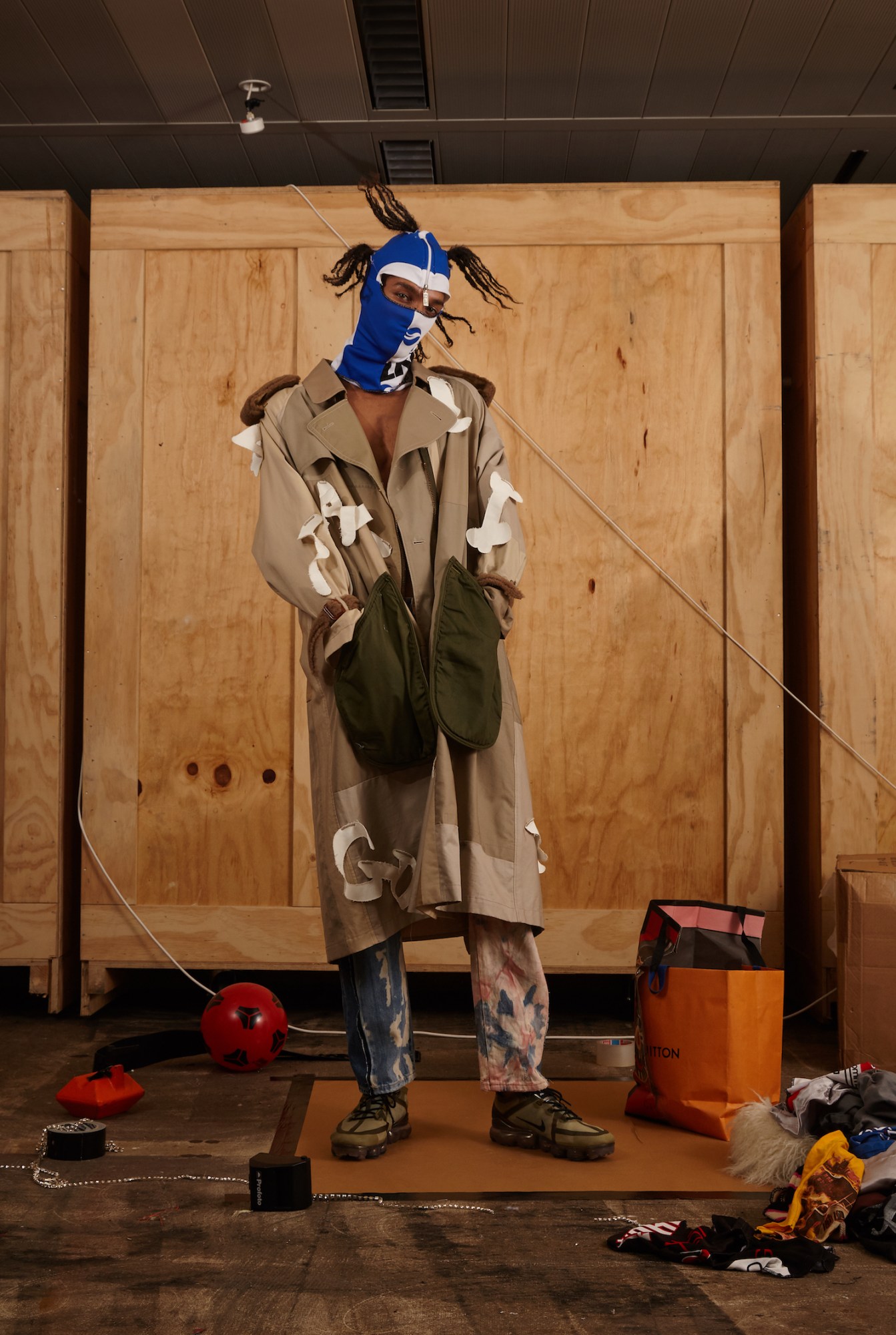
This season, Lantink has partnered with Browns to create his first major capsule collection made from deadstock designer clothes in the London retailer’s warehouses, turning leftover luxury goods into 45 unique items. It’s part of a wider ‘Conscious’ project from the retailer, which will eventually allow clothes to be rented and returned into a circular economy. It’s also a support system for a new generation of designers, like Duran, who are challenging the status quo of sustainability. “They gave me the freedom to go to their warehouse, and there were lots of pieces that didn’t sell or were slightly damaged,” the Amsterdam-based designer explained one morning in the Shoreditch outpost of Browns. “In the past, people would give me pieces and I didn’t get to choose them. This is my ideal collaboration where I can be in creative control from the beginning.”
It helps that the clothes were all in great condition — a few seasons old at most. Whereas Duran has previously been scrabbling for items here and there, sourcing clothes from clearance sales and from stores in Amsterdam, this project offered him a wide array of brands, materials and items to work with.
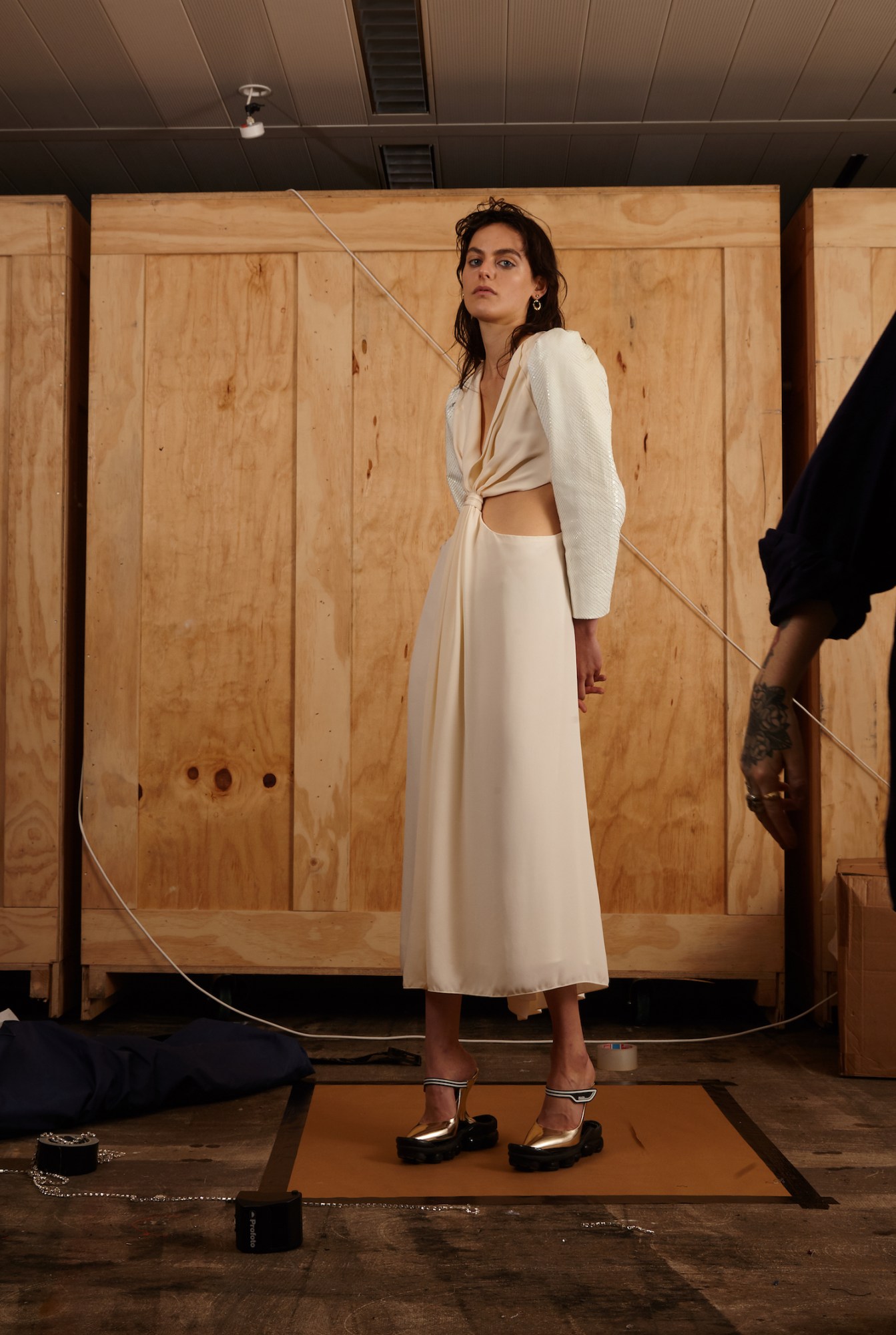
Duran studied at the Gerrit Reitveld Academy in Amsterdam, followed by a master’s programme called Fashion Matters at the Sandberg Institute, which encourages its students to study the environmental, economic and political issues the fashion industry faces. That said, Duran insists that it all began when he was just twelve, cutting up his mother’s beloved collection of White Lethal & Trash, the cult label by Walter van Beirendonck. “I never start with a theme for a collection, like it’s ‘dresses’ or ‘flowers’,’ he teases. “I go in and approach it as a blank canvas and start looking at the pieces individually to see what works.”
It can take up to three days to create one coat, for example, mainly because it’s harder to take pieces apart and create something new than it is to start with by cutting patterns from bolts of virgin cloth. But the approach pays off. At the LVMH Prize, his designs caught the eye of Browns’ buyers and won over Anna Wintour and Jonathan Anderson, whose own designers Duran had breathed new life into. Though he sews over any labels or branding and applied his own design details — look out for a graffiti print connecting the dots — the insides of his garments are just as special as the exteriors. “It’s not easy to do,” he points out. “If you think about the perfect jacket with beautiful linings, you need to be careful to re-do it all.” So despite the naivety of the jigsawed aesthetic, there’s a great amount of skill at play here — as was the case with fashion’s deconstructionist forefathers: Christopher Nemeth, Martin Margiela and Dr Noki.
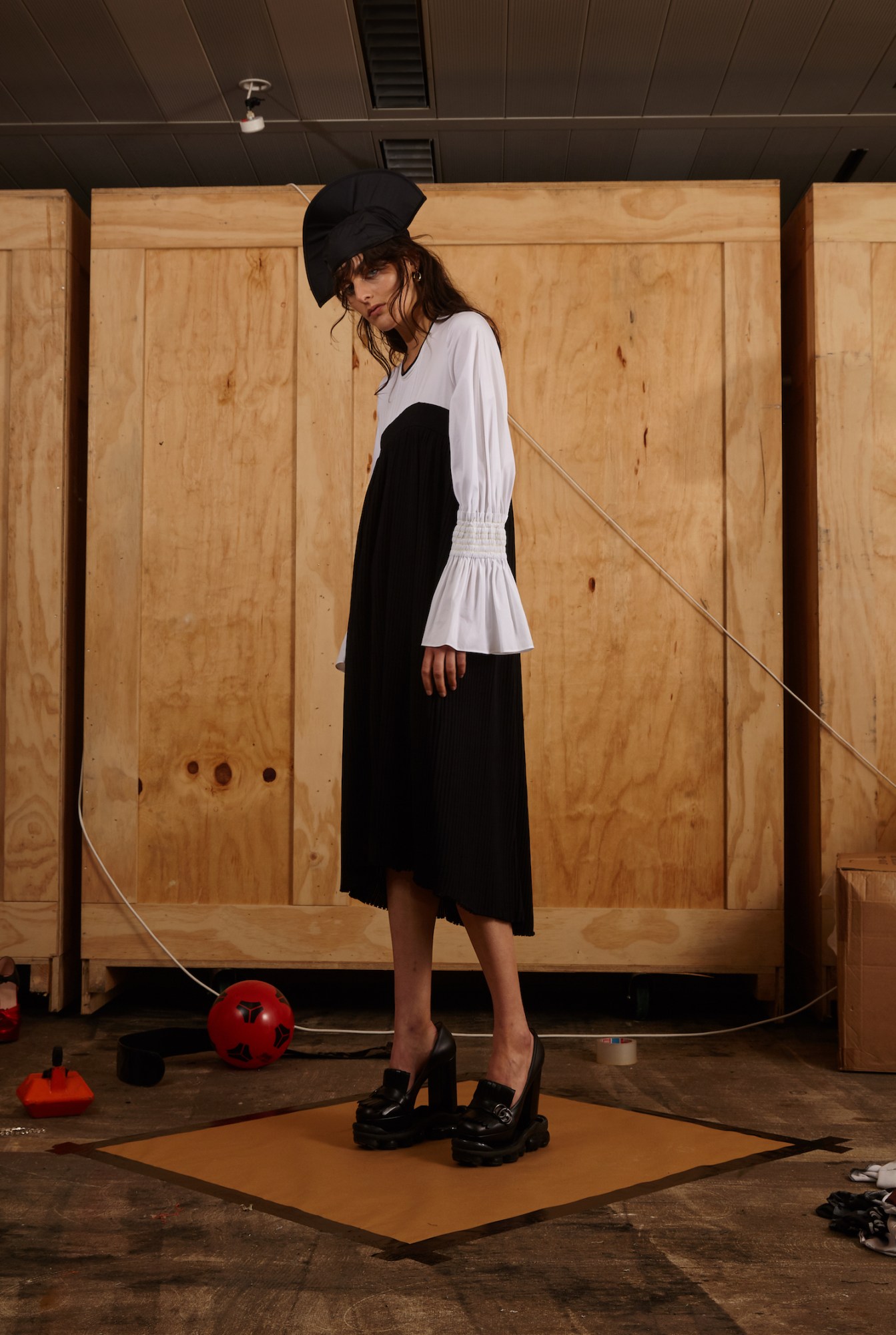
Duran purposely makes the proportions oversized, so that each of the garments can be unisex and inclusive. It resonates with his wider interests. He has also previously worked on projects with trans sex workers in Cape Town, producing a photographer series in support of local community charities, as well as homeless communities in his hometown. One of the biggest hurdles he says he faces now is that to grow as a designer and independent business, he needs to find ways to scale his one-of-a-kind designs into collections. Then again, maybe there’s a beauty in taking it one step at a time. He currently works directly with some customers, going into their wardrobes to transform what they already have — a great way to create a new outfit without buying anything new — and he is also developing an artificial intelligence program to mimic his pattern-cutting process on jackets and T-shirts.
New technology, old clothes. What could be a more remedy to fashion’s woes?
